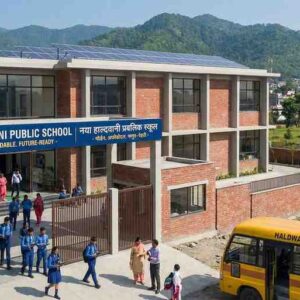In India, where the growth of educational institutions has often been measured by sprawling campuses and a vast array of facilities, a significant shift is underway. A closer examination of what genuinely contributes to effective learning is leading to a re-evaluation of the traditional emphasis on quantity. As India strides forward, the focus is increasingly on the quality of school facilities rather than their scale.
Emphasizing Holistic Development Over Size
The Indian education system is recognizing that true educational excellence is not just about how many facilities are available but about how well these facilities meet the students’ needs. This means prioritizing well-designed classrooms that support varied learning styles, integrating technology that complements the curriculum, and ensuring spaces are flexible enough to adapt to new teaching methods.
Sustainability at the Forefront
In line with global trends and recognizing the urgent need for sustainability, Indian schools are now emphasizing eco-friendly and sustainable practices in building and maintaining school facilities. This includes using renewable energy sources, implementing water conservation practices, and choosing sustainable materials for construction. These efforts not only teach students about environmental responsibility but also help institutions reduce operational costs.
Technology Integration Tailored to Educational Needs
With the digital revolution transforming education globally, Indian schools are not far behind. Quality in technological facilities now means more than just providing computer labs. It involves seamless integration of technology across the curriculum, high-speed internet connectivity, and interactive tools that enhance both teaching and learning experiences, preparing students for a future dominated by digital interactions.
Safety and Accessibility Are Paramount
As schools become more inclusive, the focus is also on making facilities accessible to all students, including those with disabilities. Compliance with safety standards to create secure learning environments is becoming a stricter norm across Indian schools. These measures ensure that all students, regardless of their physical capabilities, can benefit from educational offerings.
Proving Effectiveness Through Data
Indian educational policy makers are beginning to utilize data more effectively to assess the impact of facility quality on educational outcomes. Schools that have invested in quality improvements often showcase enhanced student performance, lower absenteeism, and higher overall satisfaction among stakeholders. These metrics are becoming crucial for parents and educators in evaluating the effectiveness of school facilities.
Strategic Investments in Educational Quality
India’s educational sector is seeing a paradigm shift from investing in more extensive facilities to enhancing the quality of existing ones. This strategic choice reflects a deeper understanding of resource allocation, where the focus is on creating learning environments that are not only physically appealing but are also intellectually stimulating and emotionally supportive.
Conclusion: Setting a New Standard in Educational Excellence
As India continues to navigate its path in global education, the shift from quantity to quality in school facilities marks a significant advance. By focusing on creating environments that genuinely foster learning, Indian schools are setting new standards in educational excellence. This approach promises to prepare a generation of students who are not only academically accomplished but also well-rounded individuals ready to face the challenges of the modern world. This strategic focus ensures that investments in education lead to substantial, sustainable outcomes, making every rupee spent a step towards a brighter educational future.













